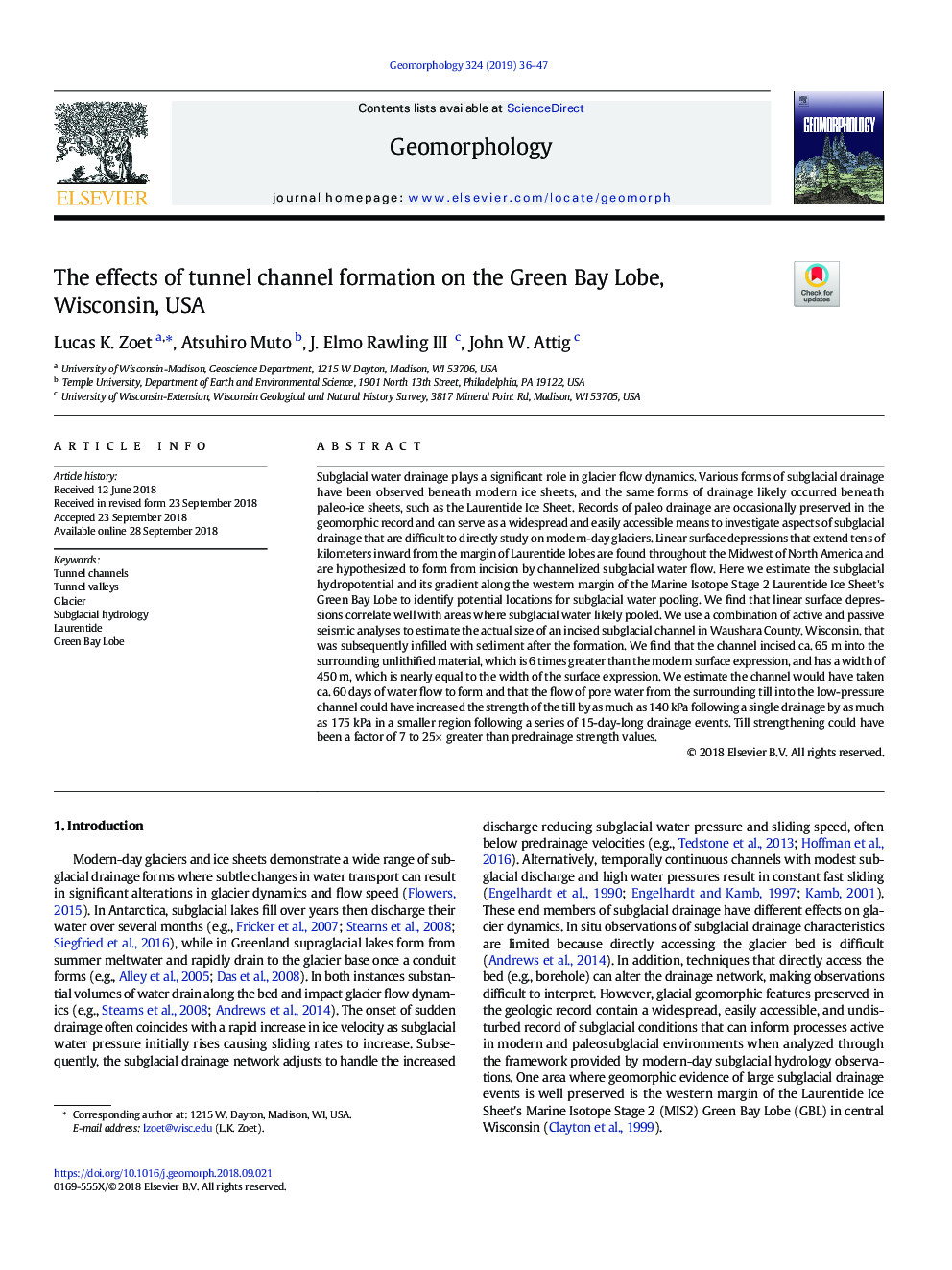| Article ID | Journal | Published Year | Pages | File Type |
|---|---|---|---|---|
| 11024678 | Geomorphology | 2019 | 12 Pages |
Abstract
Subglacial water drainage plays a significant role in glacier flow dynamics. Various forms of subglacial drainage have been observed beneath modern ice sheets, and the same forms of drainage likely occurred beneath paleo-ice sheets, such as the Laurentide Ice Sheet. Records of paleo drainage are occasionally preserved in the geomorphic record and can serve as a widespread and easily accessible means to investigate aspects of subglacial drainage that are difficult to directly study on modern-day glaciers. Linear surface depressions that extend tens of kilometers inward from the margin of Laurentide lobes are found throughout the Midwest of North America and are hypothesized to form from incision by channelized subglacial water flow. Here we estimate the subglacial hydropotential and its gradient along the western margin of the Marine Isotope Stage 2 Laurentide Ice Sheet's Green Bay Lobe to identify potential locations for subglacial water pooling. We find that linear surface depressions correlate well with areas where subglacial water likely pooled. We use a combination of active and passive seismic analyses to estimate the actual size of an incised subglacial channel in Waushara County, Wisconsin, that was subsequently infilled with sediment after the formation. We find that the channel incised ca. 65â¯m into the surrounding unlithified material, which is 6 times greater than the modern surface expression, and has a width of 450â¯m, which is nearly equal to the width of the surface expression. We estimate the channel would have taken ca. 60â¯days of water flow to form and that the flow of pore water from the surrounding till into the low-pressure channel could have increased the strength of the till by as much as 140â¯kPa following a single drainage by as much as 175â¯kPa in a smaller region following a series of 15-day-long drainage events. Till strengthening could have been a factor of 7 to 25à greater than predrainage strength values.
Related Topics
Physical Sciences and Engineering
Earth and Planetary Sciences
Earth-Surface Processes
Authors
Lucas K. Zoet, Atsuhiro Muto, J. Elmo III, John W. Attig,
